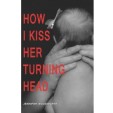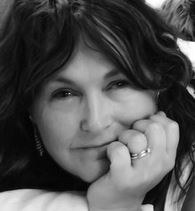The stories in Jennifer Woodworth’s strangely beautiful How I Kiss Her Turning Head examine the most primal aspects of mother-child bonds, bonds that can surpass love and approach obsession, yet, within the small, warm worlds of their origins, feel natural and necessary.
Throughout the book, Woodworth takes us to the physical and emotional heart of such connections, with vivid descriptions like this one, from “Stork Scissors & Baby Toes,” in which the narrator finds the scissors of the title too indelicate for her newborn’s toes:
But the desire to bond can have a darker side, as suggested in the opening story, “Mother of One,” in which the narrator, the mother of a single child, desires another and, thwarted in that desire, takes in an infant for daycare. After making many attempts to soothe the fussy, unhappy (and formula-fed) infant, the narrator finds one approach that works: breastfeeding the baby, and sending her own milk home in the formula bottles provided by the birth mother.
The narrator observes:
Though this story doesn’t directly address the anxieties of either stay-at-home or working mothers, these anxieties (and the unfair judgments leveled against both groups of women) are very much in the background, and they encourage us, the readers, to examine our own beliefs and potential prejudices.
One of the most beautiful, sweetly sad aspects of the collection is Woodworth’s writing about the fleeting nature of the connection between mothers and very young children, who haven’t yet turned—or who have just started to turn—away from their parents and toward the larger world.
The title of the story, “M-A-R-backwards Y,” describes the way the narrator’s little girl has begun writing her name on school papers. The narrator thinks, “She’s a big girl now: She’s taken her name into her own hands, made it smaller, made it something she can handle.” The daughter has announced, as well, that she wants to start sleeping in her own bed. Yet, the narrator observes, “She still says, Mommy, I love you forever. She’ll let me hug her (can I still say she wants me to?) and carry her to the classroom till I can’t anymore.”
As for husbands, when they are mentioned at all in the collection, they are contrary at best and sinister at worst. On the contrary side, take this exchange from “Mother of One”:
“I know you do,” he says. He means he does not want another child, not now, not ever.
Later on, the story “Notes on Being Her Mommy – Part N” ends with this line: “I’m biologically useless to my husband now.” In any other context, this line might suggest a disconsolate—even abandoned—wife. But coming as it does, as a kind of afterthought to a mother’s many loving observations about her baby daughter, it feels almost triumphant.
On the sinister side of spousal relations, we have the husband of the final story (“Ray”), who has taken part in having his wife, the narrator, committed to a mental hospital, separating her from their child. Toward the end of the story, the narrator observes:
We never get the husbands’ points of view in these stories, but this doesn’t feel necessary given the focus on the mother-child bond. To the protagonists, this connection comes to the exclusion of almost everything else, suggesting, at times, a potentially worrisome obsession. Yet, again, it also feels like the most natural thing in the world.
Would My Pick be Your Pick?
If you're interested in ________, the answer may be "Yes":▪ Making Babies by Anne Enright (nonfiction)
▪ The Stone Diaries by Carol Shields
▪ Housekeeping by Marilynne Robinson
▪ Any books about the mother-child bond






